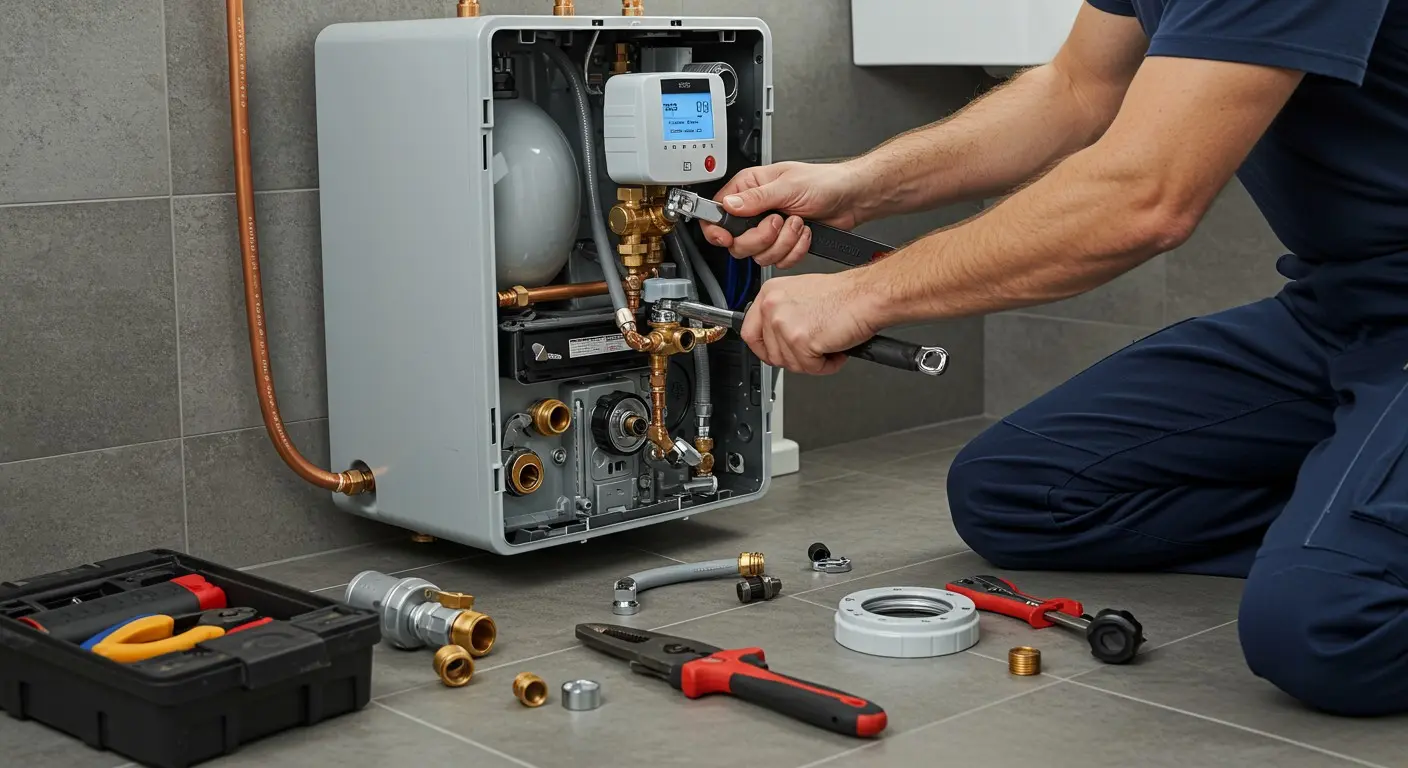Water Heater Maintenance in Mt. Lebanon, PA

Why Regular Water Heater Maintenance Matters
Energy Efficiency & Cost Savings
Sediment buildup and worn components force your heater to work harder, driving up utility bills. Routine maintenance can reduce energy consumption by up to 20%.
Extended Equipment Lifespan
Addressing corrosion and replacing the anode rod at the right intervals prevents premature failure, helping your water heater last well beyond industry averages.
Warranty Protection
Most manufacturers require annual tune-ups to keep warranties valid. Our detailed service records ensure you meet manufacturer guidelines.
Safety & Reliability
Testing the temperature-pressure relief (T&P) valve and inspecting tank integrity prevents dangerous overpressure incidents and leaks that can damage your home.

Comprehensive Maintenance Checklist
Tank Flushing
We remove accumulated mineral sediment to prevent blockages, overworking of heating elements, and uneven heating. This process restores full capacity and improves recovery time.
T&P Valve Testing
The temperature-pressure relief valve is manually lifted and reseated to confirm proper operation. A reliable T&P valve is your last line of defense against excessive pressure buildup.
Anode Rod Inspection & Replacement
The sacrificial anode rod safeguards the tank from corrosion. We measure rod depletion and replace it when necessary—typically every 3–5 years—to maintain tank integrity.
Thermostat Calibration
We verify thermostat settings and accuracy to ensure water reaches the ideal 120°F mark—hot enough for comfort and safety, yet low enough to prevent scalding and limit energy waste.
Venting & Flue Examination (Gas Models)
For gas water heaters, proper combustion air supply and flue drafting are critical. We inspect vent piping and flue connections for blockages, corrosion, and safe gas exhaust.
Leak & Corrosion Inspection
Every joint, valve, and fitting undergoes a detailed check. Early detection of minor leaks or corrosion prevents costly emergency repairs.
Tank & Pipe Insulation
Adding or replacing insulation blankets and pipe wraps reduces standby heat loss, translating into continued energy savings and more consistent delivery of hot water.
Recommended Maintenance Frequency & Transparent Pricing
Annual Tune-Up
Industry standards call for at least one professional service per year. Homes with hard water in Mt. Lebanon often benefit from biannual flushes.
Anode Rod Renewal
Depending on water chemistry and usage, plan for anode rod assessment every 3–5 years.
Typical Investment Range
Most homeowners spend between $150 and $350 for a complete annual maintenance visit. Pricing varies by tank size, model, and additional parts.
Maintenance Plans
Enjoy priority scheduling, discounted service rates, and waived diagnostic fees with our Maintenance Plans. Flexible terms let you choose the level of coverage that fits your needs and budget.
DIY Tips vs. Professional Service
Basic tasks like flushing a water heater can be performed by handy homeowners, but understanding water chemistry, gas connections, and warranty requirements demands licensed expertise. Here’s when to call a professional:
- You notice strange noises, rusty water, or visible corrosion.
- Your unit is under warranty and requires documented maintenance.
- You own a gas water heater and need flue or combustion air inspection.
- You prefer a comprehensive safety check—pressure relief, electrical grounds, and component testing require specialized tools and training.
What to Expect During Your Service Visit
Prompt, Scheduled Arrival
Our local Mt. Lebanon technicians text a photo and ETA before arrival, ensuring you know exactly who’s coming and when.
Thorough Diagnostic & Consultation
We begin with a full system assessment, identifying any underlying issues and discussing findings and recommendations with you.
Efficient, Clean Work
All maintenance steps are performed with care, and work areas are left spotless. No mess, no surprises.
Detailed Service Report
You receive a clear summary of all actions taken, replacement parts installed, and suggestions for future care—perfect for maintaining warranty compliance.
“Once and Done” Satisfaction Guarantee
If any issue recurs between visits, simply let us know. We return promptly at no extra charge until the problem is solved.
FAQs
Still have questions?
Contact Our Reliable & Experienced Team Members!
The average lifespan of a traditional water heater is between 6 to 10 years. This can vary based on usage, water quality, and maintenance. Regular flushing and inspections can help extend its lifespan. Better quality tanks last longer.
Signs that you may need a replacement include rusty water, strange noises, inconsistent water temperature, and leaks around the tank. If your unit is over 10 years old and showing these issues, it may be time for a new water heater.
The right size depends on your household’s hot water usage. For a family of four, a 40-50 gallon water heater is typically sufficient. For larger households, a larger capacity unit may be more appropriate. Consulting with a professional can help you choose the right size.
You can improve efficiency by lowering the thermostat to 120°F, insulating the tank, and flushing the tank annually to remove sediment buildup. These steps reduce energy use and improve performance.
Banging or rumbling noises are often caused by sediment buildup at the bottom of the tank. As water heats up, the sediment can trap air bubbles, causing these sounds. Flushing the tank can usually resolve this issue.


Schedule Service Today!
Contact us to schedule or request an estimate on installation and replacements!






















.avif)



